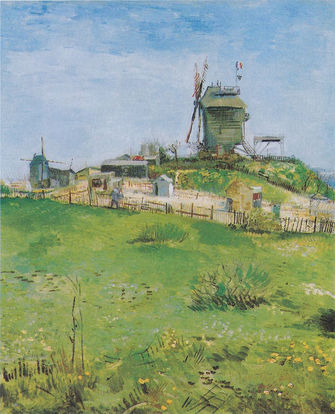At the turn of the century, Paris emerged as a vibrant hub for avant-garde artists, including Renoir, Monet, Manet, and Picasso.
Montmartre, in particular, came to epitomize this vibrant artistic era.
Montmartre was a rural district on the outskirts of Paris at the time, characterized by gardens, dilapidated buildings, and windmills, including the renowned Moulin de la Galette, which was famously depicted by Van Gogh and Renoir.
At the base of the hill, numerous theatres and cabarets thrived, such as the Moulin Rouge, Le Chat Noir, and the Elysées Montmartre, many of which are still operational today.
Fun fact: these venues were initially established just outside the official city limits—marked by today's boulevards like Clichy and Rochechouart—to benefit from lower taxes!
If you happen to go near the Moulin Rouge, be sure to check out the Avenue Frochot, a peaceful enclave home to artists like Theophile Gautier, Baudelaire, Alexandre Dumas, Gustave Moreau, Toulouse-Lautrec, and Degas.
From there, ascend the hill of Montmartre.
Admire the Moulin de la Galette, now nestled among modern buildings.
The Lapin Agile retains a touch of the bohemian spirit of 19th and early 20th-century Montmartre and was a favorite haunt of Picasso, Modigliani, and Apollinaire.
Take a sneak peak at the Hôtel Particulier, which can be accessed through a hidden door.
Also, don't miss a stroll down Avenue Junot, Villa Leandre, and Rue de l’Abreuvoir.
That concludes our historical walk through Paris! We hope you enjoyed it.
For your next adventure, why not explore the highlights of the Musée d'Orsay?



























.jpeg)